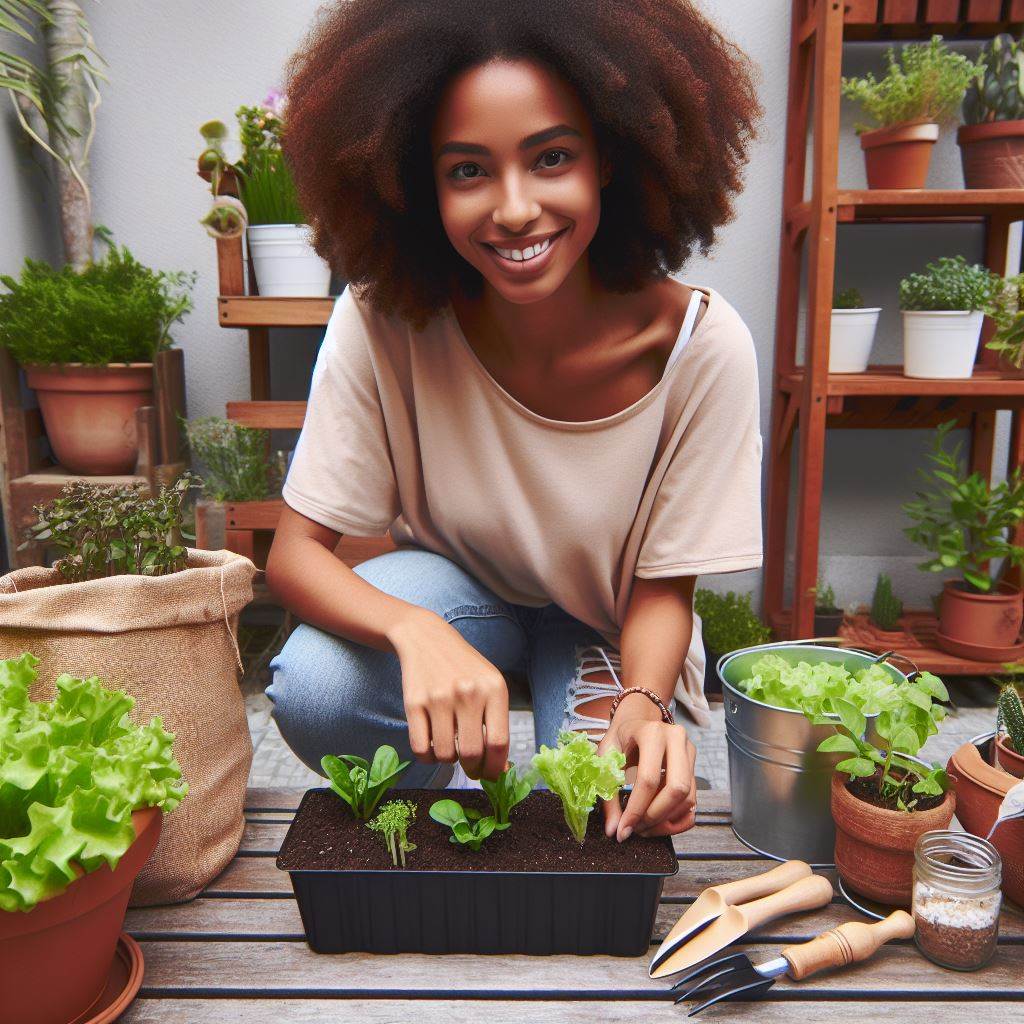Introduction
Native plants are those that naturally occur in a particular region or habitat.
They are well adapted to local conditions and are crucial for maintaining the biodiversity and ecological balance of an area.
By using native plants, gardeners can create beautiful landscapes that require minimal effort to grow and maintain.
Low-maintenance gardening is gaining popularity due to busy modern lifestyles and the desire to conserve water and reduce environmental impact.
With native plants, you can have a stunning garden while minimizing the need for irrigation, fertilizers, and pesticides.
These plants have evolved over centuries to survive in their native ecosystems without human intervention.
One of the main advantages of native plants is their ability to thrive in the local climate and require little to no extra watering once established.
They have developed deep root systems that allow them to access water from the soil efficiently, even during periods of drought.
Native plants also support the local ecosystem by providing food and habitat for native wildlife, such as butterflies, bees, and birds.
In addition to saving time and effort, low-maintenance gardening with native plants can significantly reduce the use of chemical fertilizers and pesticides.
Unlike exotic species, native plants have natural defenses against local pests and diseases, making them less susceptible to damage and reducing the need for chemical interventions.
In fact, native plants are the key to low-maintenance gardening.
By choosing plants that are naturally adapted to your region, you can create a beautiful and sustainable garden that requires minimal care while supporting local wildlife and preserving the environment.
Benefits of Native Plants in the Garden
Native plants offer numerous benefits when incorporated into your garden.
Their adaptability to the local climate and soil conditions make them an excellent choice for low-maintenance gardening.
Adaptability to the local climate and soil conditions
Native plants have evolved to thrive in specific regions, allowing them to adapt to the local climate and soil conditions.
This means they require minimal care and watering compared to non-native plants.
They have developed natural defenses against the challenges posed by the environment, making them more resilient.
1. Native plants thrive with minimal care and watering
Once established, native plants can survive on natural rainfall and require little to no additional watering.
Their deep root systems allow them to access moisture deep within the soil, making them more drought-tolerant.
2. They have drought-resistant qualities
Due to their ability to survive with limited water, native plants are well-suited for regions prone to drought.
They are naturally adapted to withstand the dry conditions, reducing the need for constant irrigation and conserving water resources.
Enhance biodiversity
By incorporating native plants into your garden, you contribute to the enhancement of biodiversity in your local ecosystem.
Native plants support a wide range of native wildlife, creating a balanced and sustainable environment.
1. Native plants support local ecosystems
Native plants provide essential food and shelter for a variety of wildlife, including insects, birds, and small mammals.
They serve as host plants for native butterfly and moth species and attract beneficial insects that help control pests.
2. They attract native wildlife, such as pollinators and birds
Native plants often feature unique characteristics that attract specific wildlife.
Brightly colored flowers and nectar-rich blooms attract pollinators, such as bees, butterflies, and hummingbirds.
The presence of these native wildlife species further enhances the beauty and ecological value of your garden.
Reduce maintenance efforts
Choosing native plants for your garden can significantly reduce the overall maintenance required to keep your garden thriving and visually appealing.
1. Less need for fertilizers and pesticides
Native plants are well-adapted to the local soil conditions and rarely require additional fertilization.
They have natural defenses against pests and diseases, reducing the need for chemical pesticides.
2. Decreased water usage
Native plants have evolved to thrive in the local climate and are adapted to regional rainfall patterns.
They require less watering once established, resulting in lower water consumption and decreased water bills.
Transform Your Agribusiness
Unlock your farm's potential with expert advice tailored to your needs. Get actionable steps that drive real results.
Get Started3. Minimal pruning requirements
Native plants generally have a natural growth habit that suits their environment.
They require minimal pruning to maintain their shape and structure, saving you time and effort compared to plants with more demanding pruning needs.
In general, incorporating native plants into your garden brings numerous benefits.
Their adaptability, ability to enhance biodiversity, and reduced maintenance requirements make them an excellent choice for low-maintenance gardening.
Read: Rainwater Harvest: A Boon for Urban Gardeners
Choosing the Right Native Plants
Conducting a site analysis
Native plants provide numerous benefits to a garden, including low maintenance requirements and support for local ecosystems.
When choosing the right native plants for your garden, it is important to conduct a thorough site analysis.
Assessing sunlight and soil conditions is the first step in determining which native plants will thrive in your garden.
Pay attention to the amount of sunlight different areas receive throughout the day and the quality of your soil.
Some plants may require full sun, while others prefer shade.
Identifying microclimates in your garden is also crucial.
Certain areas may be more exposed to wind, receive more water runoff, or have unique temperature variations.
These microclimates can impact the success of your plants and should be taken into consideration during the selection process.
Researching native plants
Researching native plants is an essential next step.
Consult with local gardening experts or nurseries to gather information about the best plants for your specific region.
They can provide valuable insights into the characteristics and requirements of different native species.
Utilize online resources and plant databases to further expand your knowledge.
These platforms offer extensive information about native plants, including their growth habits, water needs, and ideal growing conditions.
Take advantage of these tools to make informed decisions about which plants will thrive in your garden.
Selecting a variety of plants
When selecting native plants, aim for a variety that includes flowers, shrubs, and trees.
This diversity will enhance the visual appeal of your garden and provide different layers of interest.
Flowers attract pollinators, shrubs offer shelter, and trees provide shade and structure.
Consider choosing native plants with varying bloom times to ensure year-round interest in your garden.
This way, you can enjoy a succession of blooms and experience the changing beauty of nature throughout the seasons.
Additionally, selecting plants that flower at different times can support a continuous food source for pollinators.
Creating habitat diversity should also be a priority when selecting native plants.
Aim to include plants that attract different wildlife, such as butterflies, birds, and bees.
Provide elements like birdhouses, water sources, and wildflower patches to create a welcoming environment for these beneficial creatures.
In essence, choosing the right native plants for your garden requires conducting a site analysis, researching available options, and selecting a variety of plants.
By considering sunlight and soil conditions, utilizing expert guidance, and aiming for diversity, you can create a low-maintenance garden that provides habitat for local wildlife and enhances the beauty of your outdoor space.
Read: Drip Irrigation: Small Farm Water-Saving Guide

Designing a Native Plant Garden
Planning the layout
1. Purpose and Focal Points
When designing a native plant garden, it’s essential to start by determining its purpose.
Are you aiming to attract wildlife, create a peaceful retreat, or enhance the aesthetics of your outdoor space?
Clarifying the garden’s objectives helps in planning the layout effectively.
Additionally, identifying focal points, such as a striking flower bed or a tranquil water feature, adds visual interest and guides the overall design.
2. Paths and Seating Areas
Incorporating pathways and seating areas is crucial for ensuring accessibility and enhancing the garden’s usability.
Well-defined paths encourage exploration and allow visitors to navigate through the garden effortlessly.
Seating nooks strategically placed amidst the greenery provide opportunities for relaxation and contemplation, inviting people to linger and enjoy the beauty of the native plantings.
Grouping Plants by Requirements
1. Sun-Loving Plants in Sunlight
Understanding the sunlight requirements of different plant species is key to their successful cultivation.
Sun-loving plants thrive in areas that receive ample sunlight throughout the day.
When planning the layout, designate sunny spots for these species to ensure they receive the light they need to grow and flourish.
2. Shade-Tolerant Plants in Shadows
Similarly, shade-tolerant plants have adapted to thrive in low-light conditions.
These species fare well when planted beneath trees or near structures that cast shade.
By strategically placing them in shaded areas, you can maximize their growth potential and create dynamic contrasts within the garden.
Incorporating Native Grasses and Groundcover
1. Erosion Control
Native grasses play a vital role in stabilizing soil and preventing erosion, particularly on slopes or in areas prone to runoff.
Their extensive root systems help bind the soil together, reducing the risk of erosion caused by wind or water.
By incorporating native grasses into the garden design, you can mitigate soil loss and promote a healthier ecosystem.
2. Visual Interest and Texture
In addition to their practical benefits, native grasses and groundcovers add visual interest and texture to the garden landscape.
Their diverse forms, colors, and textures create dynamic contrasts and enrich the overall aesthetic appeal of the space.
Whether used as a focal point or as a backdrop for other plantings, native grasses and groundcovers contribute to the garden’s beauty and diversity.
Read: Smart Watering: Techniques for Small-Scale Farms
You Might Also Like: Small Garden? Big Harvest Vegetable Tips
Care and Maintenance of Native Plant Gardens
Native plants are known for their ability to thrive in their natural habitats without the need for extensive care.
However, like any garden, they still require some attention and maintenance to ensure their health and longevity.
This section will discuss the care and maintenance tasks specific to native plant gardens.
Proper watering techniques
To promote deep root growth and drought tolerance, it is important to water native plants deeply and infrequently.
This encourages the roots to grow deeper into the soil in search of water, making the plants more resilient during periods of drought.
Mulching around the plants is also essential to conserve moisture, reduce evaporation, and suppress weed growth.
Natural pest and weed control
One of the advantages of native plants is that they have natural defenses against pests and diseases.
By attracting beneficial insects such as ladybugs, lacewings, and bees, you can create a balanced ecosystem in your garden that helps control harmful pests.
Planting flowers and herbs that attract these beneficial insects is a great way to achieve this.
Additionally, using organic weed control methods like hand-pulling, mulching, and natural weed killers will keep unwanted plants at bay without harming the native ones.
Showcase Your Farming Business
Publish your professional farming services profile on our blog for a one-time fee of $200 and reach a dedicated audience of farmers and agribusiness owners.
Publish Your ProfileRegular monitoring and maintenance tasks
Regular monitoring of native plants is important to identify any issues early on and take appropriate action.
Pruning plants regularly helps remove dead or damaged branches, promotes healthy growth, and maintains their desired shape.
Deadheading, which involves removing spent flowers, encourages the production of new blooms and keeps the plants looking neat.
If some plants become overcrowded or start to outgrow their space, dividing and transplanting them can help control their size and rejuvenate the garden.
In a nutshell, caring for native plant gardens involves proper watering techniques, natural pest and weed control, as well as regular monitoring and maintenance tasks.
By following these practices, you can ensure that your native plant garden remains healthy, beautiful, and low-maintenance.
Read: Maximize Yields, Minimize Water in Urban Farms
Conclusion
Recap of the benefits of native plants in low-maintenance gardening
Native plants offer numerous benefits in low-maintenance gardening.
They are well-adapted to the local climate, soil conditions, and pests, which makes them easy to care for.
Their deep roots help prevent soil erosion and retain water, reducing the need for irrigation.
Native plants also provide food and habitat for local wildlife, enhancing biodiversity in the garden.
Encouragement to embrace the beauty and sustainability of native plants
By embracing native plants, gardeners can create stunning landscapes while promoting sustainability.
Native plants offer a unique beauty that cannot be replicated by exotic species.
They add a sense of place and connect us to the natural heritage of our region.
Their resilience and ability to thrive without excessive maintenance make them a wise choice for any garden.
Call-to-action to start incorporating native plants in the garden
Ready to make a difference in your garden?
Start incorporating native plants today!
Visit local nurseries or native plant sales to find a wide selection of species suited to your area.
Research which plants are native to your region and create a planting plan.
Start small and gradually replace non-native species with natives.
Share your passion for native plants with others and inspire them to join the low-maintenance gardening movement.
Together, we can create beautiful, sustainable gardens that support local ecosystems.




